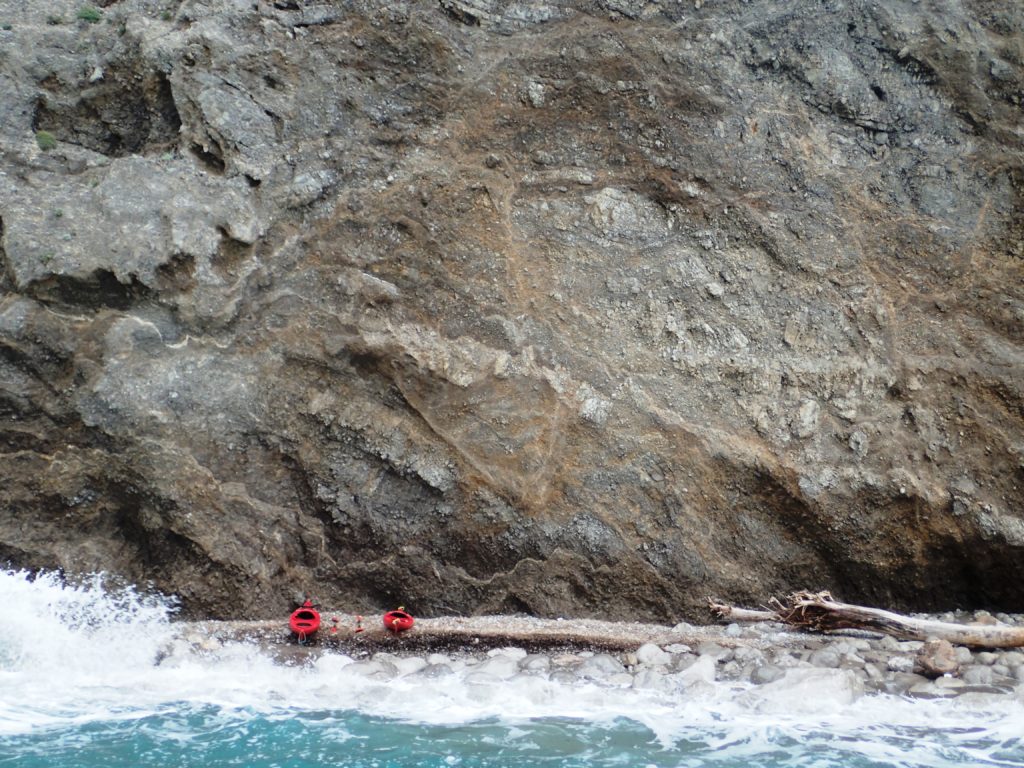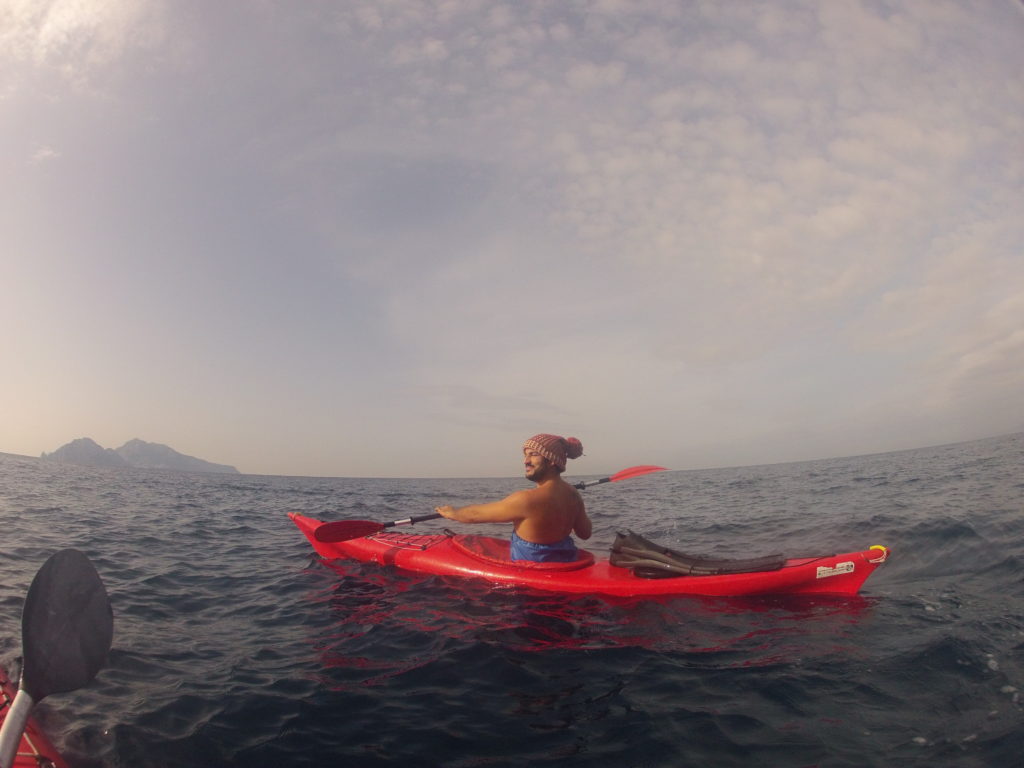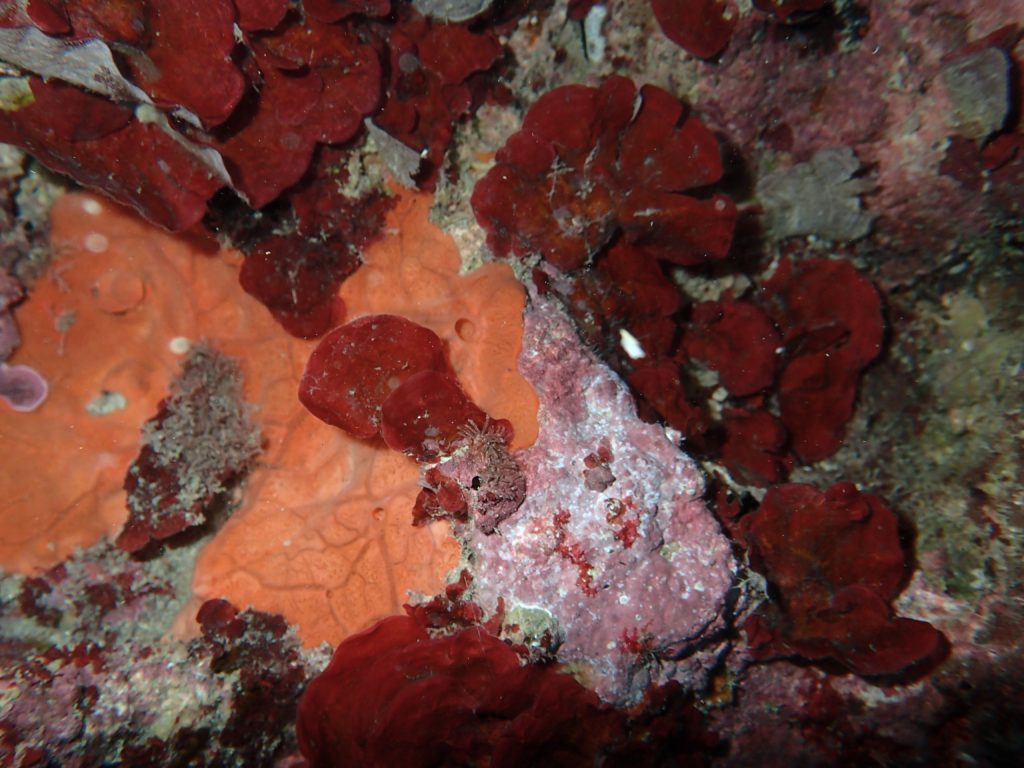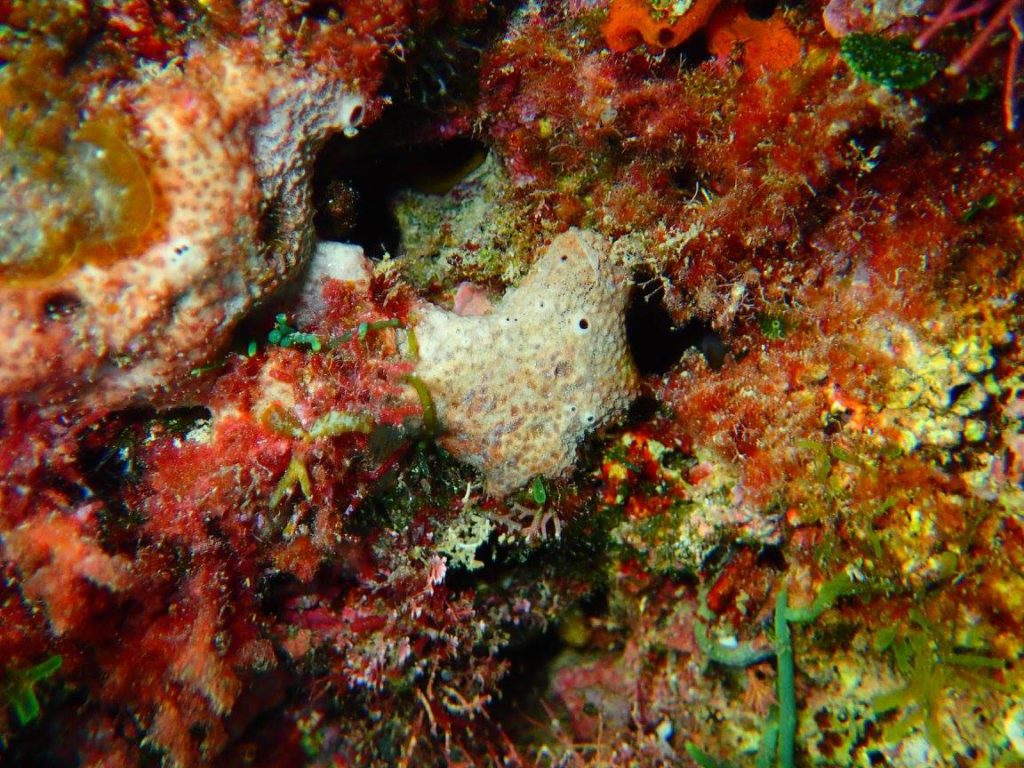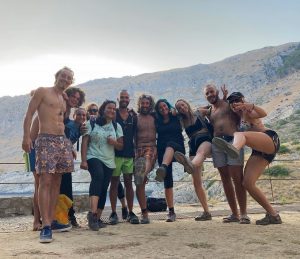Updated on November 28, 2016
Monitoring of Sponges in Ieranto
Now that summer days in Ieranto feel so far away, we go back to the beautiful bay to monitor different species of animals. The first day we will study sponges. We are really excited about returning to this bay that for a time was our second home. Some of us go to Ieranto kayaking from Marina della Lobra, because we really want to enjoy the sea and the kayak after having spent a long time apart. The rest of the team chooses to go to Ieranto following the path in the hill because they were missing this walk through olive groves and the spectacular views. We are lucky because the weather is really good this day of November. We all arrive (against all odds just at the same time) with a big smile in our faces. The place when empty looks even more beautiful, without the crowds from summertime, we have heaven on earth just there waiting for us, and all we want is to enjoy it to its fullest extent.
With this energy we put our wetsuits and masks on (the day is beautiful but we can not forget that we are closer to Christmas time than we are to summer days) and we start to look for these curious animals among the rocks. We divide in groups; one part will monitor the small beach and the other one will take care of the big one.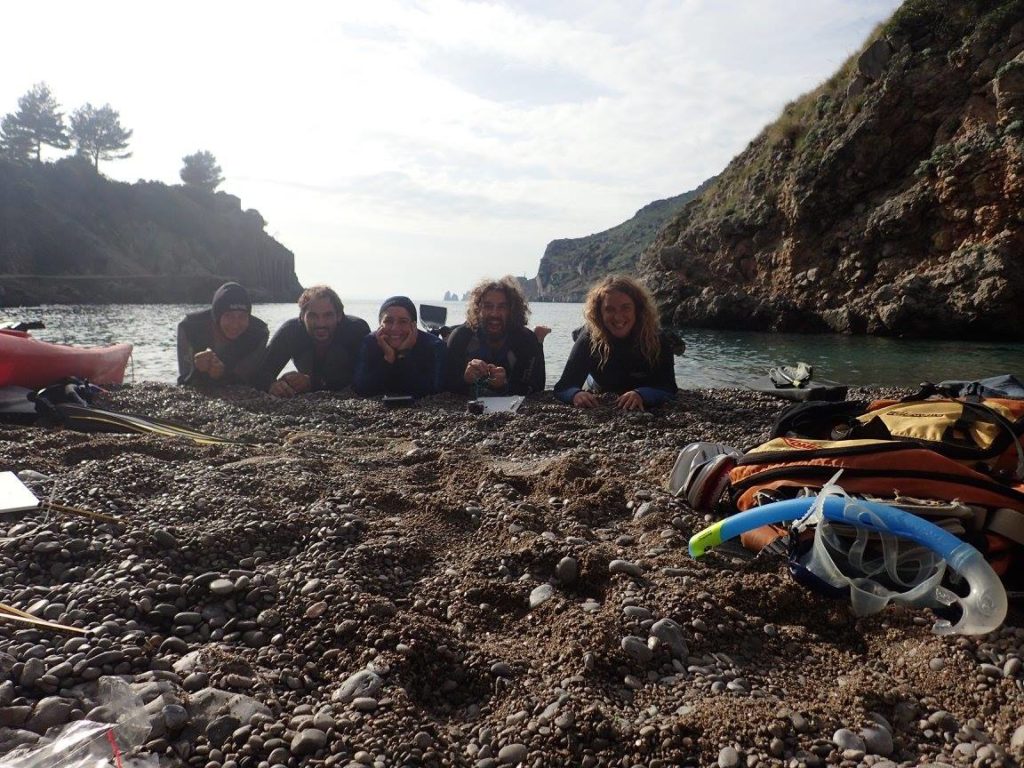 We snorkel, blackboard in hand, checking all rocks walls and registering all sponges we see. We also try to take pictures (some trials are more successful than others. After more or less one hour and a half into the water, we get back to the beach, starving and eager to share with the rest what we have seen, to show photos, ask questions and to get some rest all together.
We snorkel, blackboard in hand, checking all rocks walls and registering all sponges we see. We also try to take pictures (some trials are more successful than others. After more or less one hour and a half into the water, we get back to the beach, starving and eager to share with the rest what we have seen, to show photos, ask questions and to get some rest all together.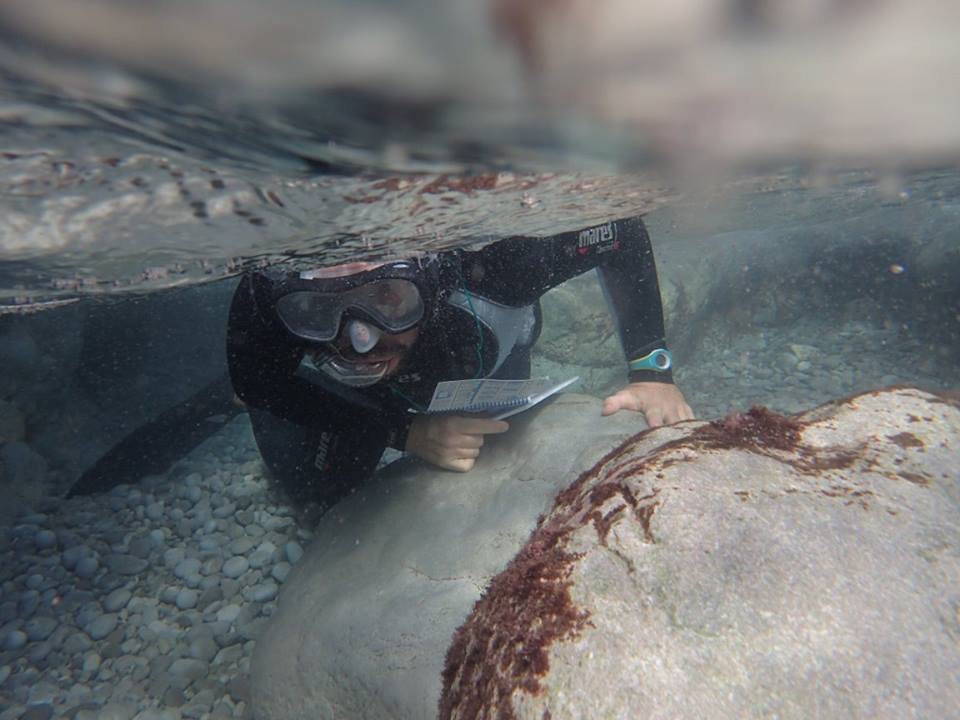 In this first survey we find a dozen different species of sponges. We can say that the darker areas are richer in sponges. For example, the two natural arches near the small beach are home to six different species: Spirastrella, Ircinia varibilis, Ircinia oros, Rognone, Yellow Clathrina and perhaps Agelas (we are not so sure about having properly identified this one). In short, the presence of a sciaphilous environment (for those species tolerant of shade) is confirmed by the conspicuous presence of sponges
In this first survey we find a dozen different species of sponges. We can say that the darker areas are richer in sponges. For example, the two natural arches near the small beach are home to six different species: Spirastrella, Ircinia varibilis, Ircinia oros, Rognone, Yellow Clathrina and perhaps Agelas (we are not so sure about having properly identified this one). In short, the presence of a sciaphilous environment (for those species tolerant of shade) is confirmed by the conspicuous presence of sponges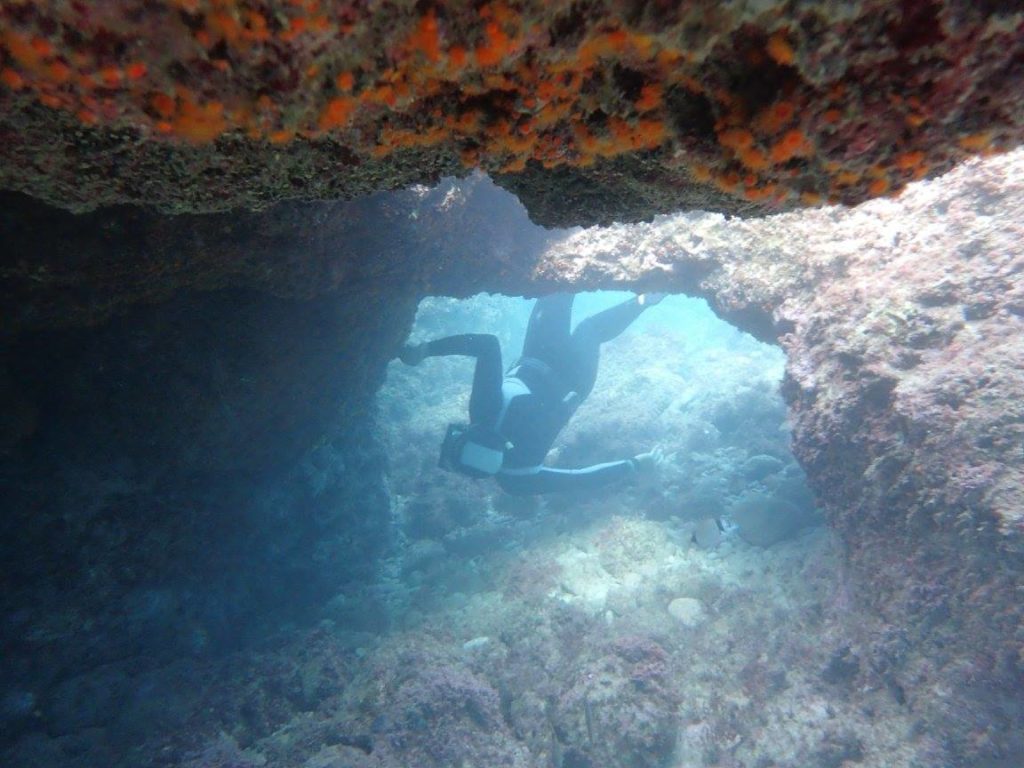
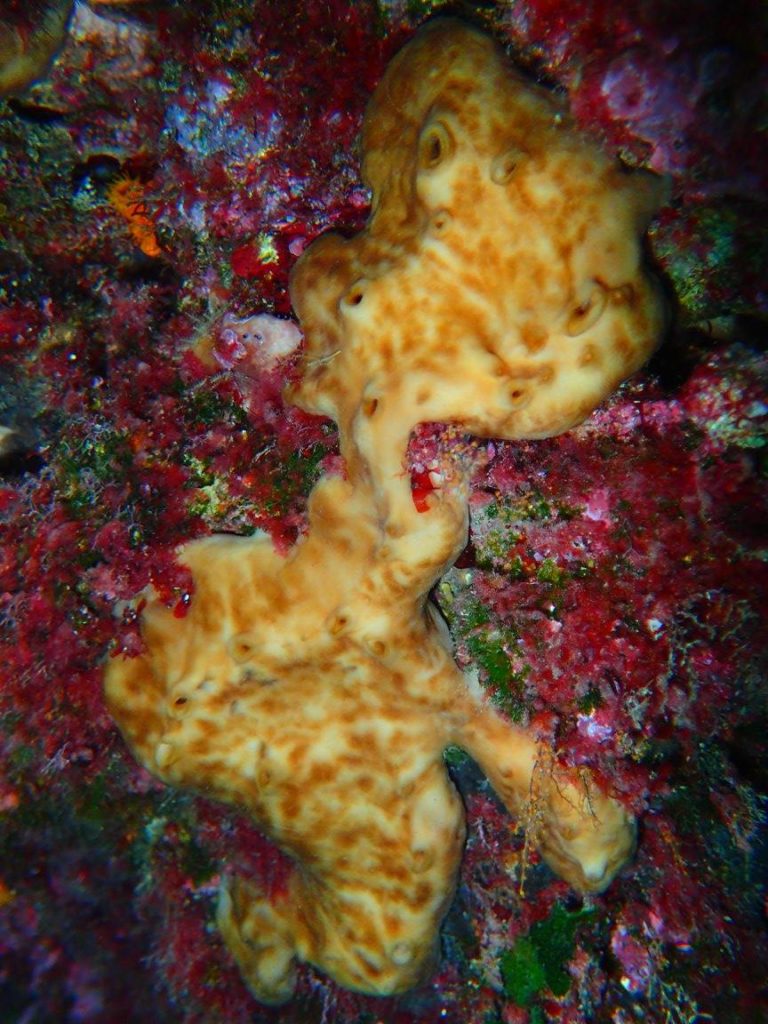 Days later we go back for a second round. Part of the team changes, but the feeling of excitement is still the same as the first day. For the second time those going by land and sea arrive at the same time to Ieranto (we can not believe it!!). We will finish the work with sponges and will start to monitor molluscs. This time the weather it’s not as nice as last time and it gets difficult to arrive by kayak and snorkel near the rocks because of the many waves but we do our best and finish with good results and photos. To compensate for the strong sea, returning by kayak we can see bioluminescence every time we put the paddle in the water, what an amazing show from nature! We still have to properly analyze all data collected, but we have found 16 species of molluscs.
Days later we go back for a second round. Part of the team changes, but the feeling of excitement is still the same as the first day. For the second time those going by land and sea arrive at the same time to Ieranto (we can not believe it!!). We will finish the work with sponges and will start to monitor molluscs. This time the weather it’s not as nice as last time and it gets difficult to arrive by kayak and snorkel near the rocks because of the many waves but we do our best and finish with good results and photos. To compensate for the strong sea, returning by kayak we can see bioluminescence every time we put the paddle in the water, what an amazing show from nature! We still have to properly analyze all data collected, but we have found 16 species of molluscs.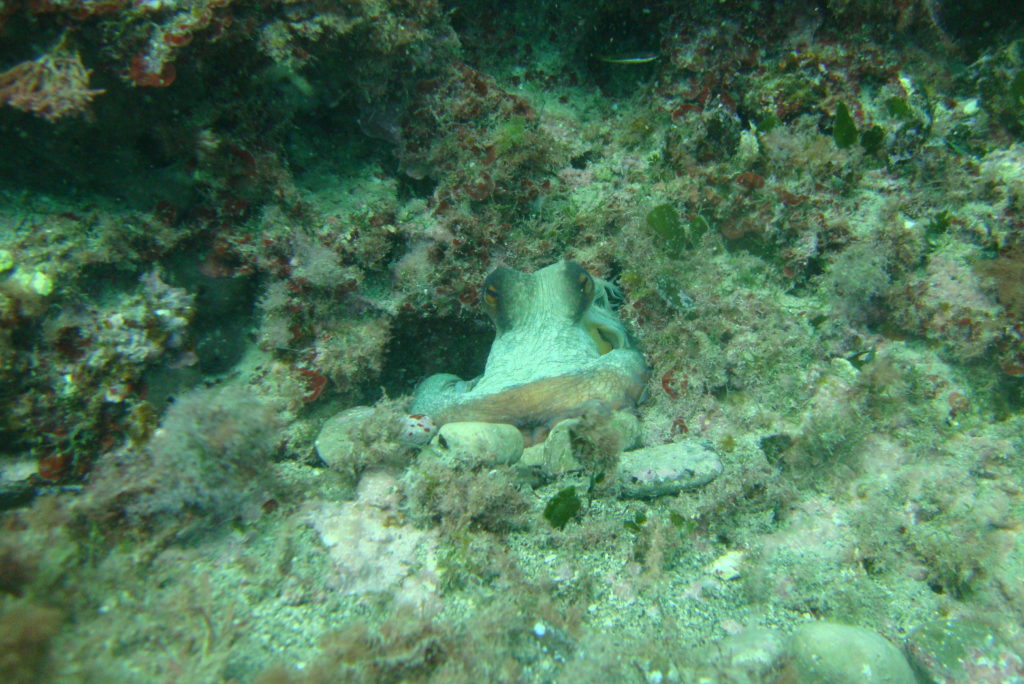
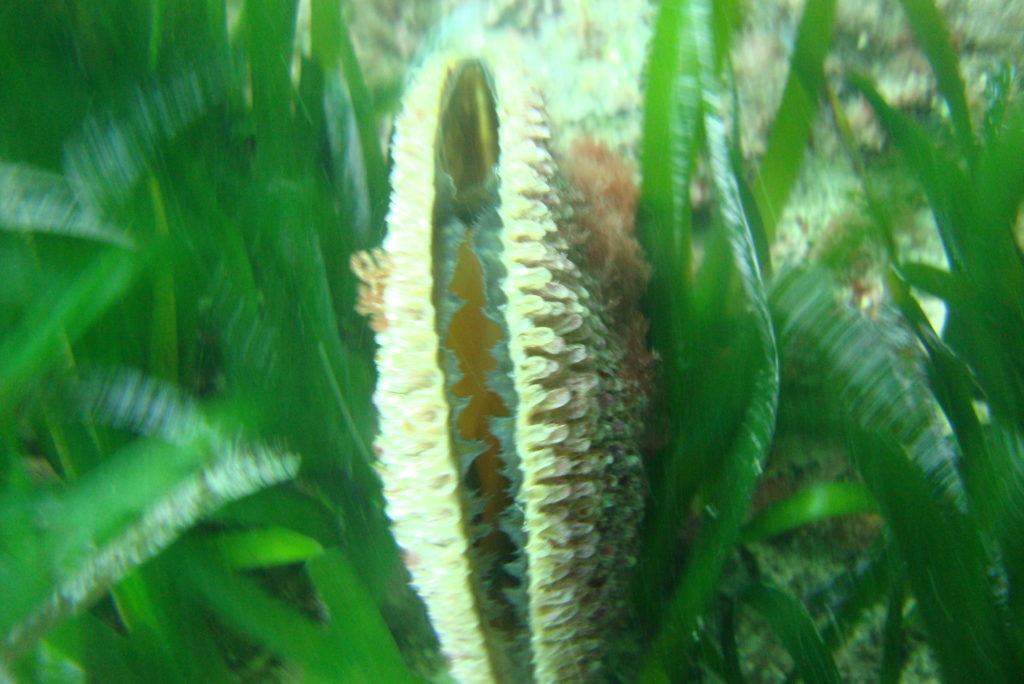 We cannot wait to go back and continue with this beautiful monitoring activity. We will see what new things the walk and the bay bring us next time!
We cannot wait to go back and continue with this beautiful monitoring activity. We will see what new things the walk and the bay bring us next time! 